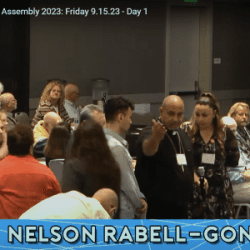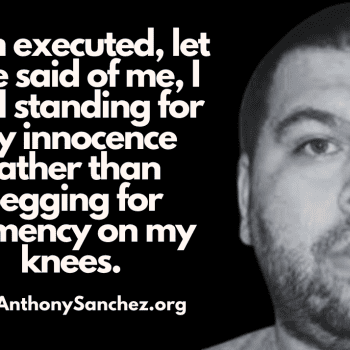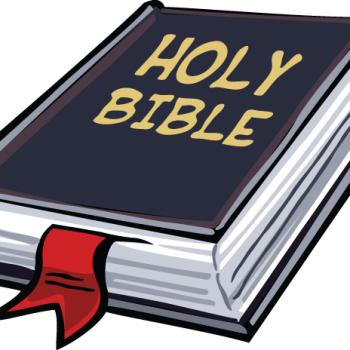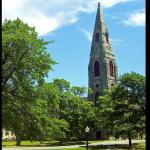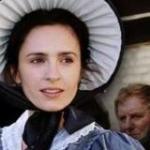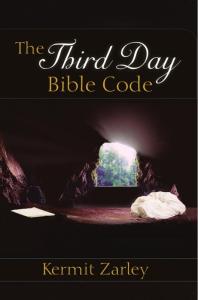 This weekend, I’m attending a virtual conference called New Insights into the New Testament. It is hosted by Dr. Bart Ehrman, bestselling author and professor of religious studies at the University of North Carolina, Chapel Hill. The conference consists of ten professors presenting hour-long speeches about new insights into the Bible’s New Testament (NT). I watched two presenters today: Dr. Mark Goodacre and Dr. Dale Allison. Tomorrow, I intend to watch Dr. James Tabor and Dr. Amy-Jill Levine. I know personally Allison, Tabor, and Levine and have communicated with Goodacre. In this post, I recount some of what Goodacre said, tomorrow what Allison said, and perhaps posts about the other two professors after that. After each professor presents, host Ehrman appears and supervises a Q&A, receiving questions from the audience. We had been told that the audience was nearly 3,000 people.
This weekend, I’m attending a virtual conference called New Insights into the New Testament. It is hosted by Dr. Bart Ehrman, bestselling author and professor of religious studies at the University of North Carolina, Chapel Hill. The conference consists of ten professors presenting hour-long speeches about new insights into the Bible’s New Testament (NT). I watched two presenters today: Dr. Mark Goodacre and Dr. Dale Allison. Tomorrow, I intend to watch Dr. James Tabor and Dr. Amy-Jill Levine. I know personally Allison, Tabor, and Levine and have communicated with Goodacre. In this post, I recount some of what Goodacre said, tomorrow what Allison said, and perhaps posts about the other two professors after that. After each professor presents, host Ehrman appears and supervises a Q&A, receiving questions from the audience. We had been told that the audience was nearly 3,000 people.
[I’ve placed the image of the front cover of my book, The Third Day Bible Code, here because of the subject of Jesus’ resurrection. I made that image of a view from inside a tomb that Jesus’ tomb might have looked like. I was inspired to make this for that book because of Mel Gibson’s movie “The Passion,” since that is the last scene in the film. I had never seen a picture from the back of a tomb-cave looking at the tomb entrance.]
Mark Goodacre has a British accent since he is from the UK. He is Professor of New Testament and Christian Origins in the Religious Studies Department at Duke University in North Carolina. He is an authority on the Synoptic Problem. He has written books entitled Thomas and the Gospels, The Case Against Q, The Synoptic Problem, and Goulder and the Gospels. He favors the Farrar Hypothesis concerning the origin of the New Testament gospels and therefore dismisses an existence of Q. That is the abbreviation of the word quell, a German word that means “source.” Scholars use it in referring to the written sources that the NT gospel writers used in crafting their gospels. Most NT gospel scholars believe there was a now extant (non-existent) literary document that existed very early after the time of Jesus and that all three Synoptists (authors of the gospels of Matthew, Mark, and Luke) used Q in compiling their gospels. These scholars believe Q consisted only of sayings of Jesus, thus nothing else about him. But some NT scholars do not think there ever was a Q. Most of them, including Dr. Goodacre, accept the Farrar Hypothesis. That means that the authors of the Gospel of Matthew and the Gospel of Luke knew of, and used, the Gospel of Mark in crafting their gospels, and there was no Q. Although I am by no means an expert on this, I have written books about the NT gospels, a screenplay on Jesus resurrection, and I’ve have leaned toward believing this Farrar Hypothesis.
But Goodacre was not speaking on this subject today. Instead, he spoke about Jesus’ tomb. He started by providing some research he has done, which is likely original, about how the term “empty tomb” became applied to Jesus’ tomb. That expression has to be with the authenticity about the Christian message, that Jesus literally arose from the dead. There is no such expression in the NT gospels. Mark said in patristic writings, it first appears in the fourth century in the writings of John Chrysostom, who was the most famous for his preaching ability of all church fathers.
Goodacre said of all the ancient tombs that have been discovered in the Holy Land, all have been “family tombs.” That means that they had multiple places for bodies to be entombed. The tombs usually were carved out of limestone rock. Each body was usually laid on a ledge. Jews often performed another act about year after the dead person’s corpse had been entomb. It was to take the bones, which by then no longer had flesh on them, and put them in an ossuary. That was a rectangularly-shaped box made of stone. Most of these family tombs had horizontal receptacles dug out in which they would slide the ossuary into one of the receptacles. Mark also said no ancient tomb has ever been discovered in the Holy Land (I think he said that rather than metro-Jerusalem or Judea) that was built only for a single deceased person, and that is why they are often called “family tombs.” He said only wealthy people could afford to own the land and construct such a tomb, which could take months to build.
Dr. Goodacre also said the stone that covered Jesus’ tomb entrance was not a round rock, but cylinder-shaped that could more easily be rolled into place. He said out of about a thousand ancient tombs that have been discovered in the Holy Land, only nine cynlinder-shaped stones to cover the tomb entrance have been discovered. In thinking of this, “an angel of the Lord, descending from heaven, came and rolled back the stone and sat on it” (Matthew 28.2).
During the Q&A, Goodacre said the NT gospel data does not say the resurrected Jesus walked out of the tomb. And Mark added that the gospel data does not allow that he walked out of the tomb. Mark also mentioned that in Mel Gibson’s film “The Passion,” at the end of the film has Jesus walking out of the tomb. Ehrman then interjected that he doesn’t know of any NT scholars who liked that film. Goodacre seems to be somewhat of an expert on Hollywood Jesus films, of which there have been about 100. Goodacre said, “I hated the film.”
The last Q&A question was about what Mark thought of “the Shroud of Turin.” So many people ask about that. I’ve written a blog post on this entitled “The Shroud of Turin Is Not Jesus’ Burial Cloths.” Notice this post says “Cloths” whereas the Shroud of Turin is a single cloth. Burial cloths that were put on Jesus’ body had to be more than one piece of cloth because the scriptures are clear that a separate head covering, called a napkin, was place on his head. Mark said the Shroud of Turin is not only not the burial cloth of Jesus, it is a fraud! Mark didn’t go into much detail about that. I think NT scholars may get tired of being question about the Shroud of Turin. I fully subscribe to Mark saying it was not the burial cloth of Jesus. And I thought it interesting that an authority on the subject of Jesus’ tomb such as Goodacre is would say with conviction it is a fraud.



